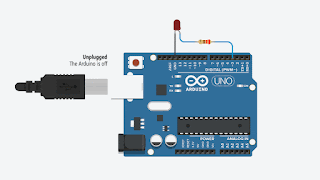“We’ve all become used to thinking of Gen Z as the first truly “digital native” generation. They were born when the internet was available to everyone and don’t remember a time when it wasn’t normal to carry a smartphone wherever they go and document their lives on TikTok and Instagram. Unfortunately, it turns out that this form of digital native might not translate to being able to work with the tools and technologies that are expected to shape the 21st century.”
– Is Our Digital Future At Risk Because Of The Gen Z Skills Gap?
The digital skills gap is an ongoing concern, but in building a successful digital skilling program over the past two decades I’ve trial and errored my way to an efficient process for getting students from thinking they have digital fluency to actually having it. Here’s how:
Step 1: Start Where People Are Most Familiar (I.T.!)
Information Technology (or I.T.) is where most people have regular contact with digital technology, though many people don’t know what I.T. stands for. The devices we live our lives on in 2023 all depend on digital infrastructure and incredible engineering to do what they do. To unpack all that and make people aware of how this technology works, you build it!
RCT Ontario is the local branch of the Computers For Schools national program that takes off-lease technology and gives it to schools and others in need. They are all you need to get hands on with digital technology. I’ve found that building a desktop computer from scratch is a great way to get past the bluster of self-professed computer experts (aka: students who have been told they are digital natives) and let them show what they actually know.
By building their own PCs from scratch, students who have some experience fill in gaps and students with no tech background find that they have a clear understanding based on hands-on familiarity. This also does a lot to clear away misconceptions and myths around digital tech (like that digital native one).
Another good resource is PC Part Picker that lets students theorize their perfect PC. Once they have an understanding of the hardware and how it goes together, suddenly customization becomes a possibility and the generic tech that most people live with isn’t enough. Many of my grade 9s have built their own PC at home by the time I see them again in grade 10.
Cisco’s I.T. Essentials course is available for free on Netacademy and offers media rich, current online learning support for this hands on I.T. exploration. It also makes students aware of the world of industry certifications out there in information technology. Students starting in I.T. Essentials can work towards their CompTIA A+ computer technician certification which is the first step towards moving in many directions in the industry.
Once everyone has their hardware worked out, it’s time to get into operating systems. Like I.T. hardware, people have experience with OSes but seldom get under the hood. A good way to expand familiarity and get students interested in OS options is to have them build a multi-boot system on their DIYed PCs.
We can usually do the PC builds and OS stacks in a week of classes (about 6 hours of instructional time). In an intensive course you could get everyone hands-on and familiar with the architecture of computers and operating systems in a day (6-7 hours).
Step 2: Use Your DIY TechTo Scale Down and Explore Electronics & Coding With Arduino
The Arduino micro-controller is a simple digital device that does a great job of showing the basics of how computer code performs with hardware. It also introduces students to circuits and the electronics fundamentals that drive all digital technology.
This is another area where the bluster gets cleared away by demonstrated mastery. If a
student tells me they already know all about electronics, I tell them that they only have to do circuit number five and then can go right into designing their own project. A few can show what they claim to know, but many struggle and then I gently redirect them to doing the circuits as a ‘refresher’. By the end of the Arduino unit everyone has tactile knowledge of the basics in circuit building and coding.
Step 3: Using Your DIY Tech to Scale Up And Explore Connectivity & Networking
To get students the Arduino software and access to circuits on their desktops, you would have to connect them to the internet. After Arduino, students are more comfortable with their PCs and how they work, so it’s time to go upstream and tackle networking!
This is another intimate aspect of people’s lives that is often misunderstood. By having students build local networks with each other’s machines and pass data across, they again benefit from direct, tactile, experiential learning.
We then connect these local networks together into a class-wide network and watch data travel across it in real time, but the favourite part is stress testing the network to see how much data it can handle. Tools like LOIC (low orbit ion canon!) can be used to DDOS machines off the network by overloading them with data. At this point complex, multi-disciplinary specialities in digital technologies (like cybersecurity) start to glimmer in the distance. Anyone trying to teacher cyber from a place with none of these foundational understandings in place is going to have trouble.
Another good stress test is to set up an older LAN based game which requires inputting IP addresses and other details. It’s not often students have playing a multi-player game as a classroom learning target. You can guess how popular that is.
Tools wise, Cisco offers their Packet Tracer network simulator for free (you can become a Cisco Network Academy at no cost, which makes dozens of introductory ICT, networking and coding courses available). Packet Tracer lets students build complex theoretical networks and then push data through them to see if and how they work.
The networking unit typically takes another week of high school classes, so could be managed in a single 6-7 hour day. By the end of it students are experimenting with their DIY desktops on their DIY networks. The learning doesn’t get any more genuine than this and the result is students who are tangibly developing real digital fluency.
Step 4: Using Your DIY Tech to Explore Data Management and Programming Through an Introduction to HTML and How the Web Works
In the high school junior grades we focus on Javascript and HTML (both common web-focused coding languages). HTML works well as it allows students to quickly understand how the webpages they spend so much time on are displayed. Javascript is helpful because it allows webpages to run executable scripts and hints at the complexity modern webpages are capable of. LIke the other steps, the point here is to get behind the curtain an begin to make students aware of how the technology they are codependent on works.
Students can create and share simple HTML webpages on their network giving them a hands-on introduction to internet architecture. W3 Schools does a great intro to HTML and Javascript (and CSS and HTML5). The point isn’t to create a web developer in a day, but to (once again) develop tactile familiarity with digital technologies that have always been hidden from them.
Coding takes time to develop, but an introduction to web design typically takes about a week to get students to the point where they know enough syntax to build a simple webpage. What’s nice about HTML is that there is an immediacy to it. You put in a command and immediately see the result.
Step 5: PLAY!
 |
| When you’ve got foundational digital fluency, you can chase down NASA complex projects! Here CyberTitans Vlad & Wyatt (also a 2x Skills Ontario medalist in IT & Networking) are building a Beowulf supercomputer!.. out of ewaste! |
I’d run this in adult up-skilling as an intensive week of digital fluency training. The final day would be a student directed mini-project. For those who dug PC building, they can build something to a specific purpose. For those who dug the Arduino and electronics, opportunities to explore await, and for those intrepid few who enjoyed networking and data management/programming, they can chase down more complex connectivity or web development.
When I did my A+ training way back during Y2K it was an intensive week which gave me enough context to chase down my certification in a few months of practice and study. I’ve had a few students manage to get A+ certified as a computer technician while still in high school, but it’s a challenge due to the breadth of material. I.T. techs need to be familiar with older tech and newer tech as well as what’s current. That experience takes time, which is why my seniors do in-school I.T. support. Being dropped into real world technology complications helps they hone the skills they need to be an effective technicians.
Why Do this?
This level of hands-on technical familiarity could be established in 35 instructional hours. When I see Ontario dedicating more time to mandatory courses like ‘Career Studies’ I shake my head. This kind of digital fluency would actually lead to a career, but instead we have grade 10s, most of whom have no idea what they want to do for a living, spinning in circles for half a semester (it’s also one of the most failed courses in the curriculum). We could be delivering digitally competent students and close the digital skills gap, but instead we mandate mandatory eLearning, then we’ll wonder why that didn’t work either.
For those tackling adult re-skilling, I see a lot of cybersecurity ‘bootcamps’ that assume much of this digital fluency (much like K12 does) and then wonder why their dropout rates are so high. Cybersecurity is a multi-disciplinary specialization within ICT and you can’t get to it directly any more than you can expect an illiterate adult to tackle romantic poetry; you need foundations skills before you take on that kind of complexity. It isn’t an impossible ask, but it is one that needs to recognize the need to start from where people are at, which is further back than we think they are.
Follow Up Links
The Digital Divide is Deep and Wide (2017): https://temkblog.blogspot.com/2017/12/the-digital-divide-is-deep-and-wide.html
How to Pivot Ontario Education to Prepare for The Next Wave (we didn’t): https://temkblog.blogspot.com/2020/05/how-to-pivot-ontario-education-to.html
Exceptional Times: Using a Pandemic to Close the Digital Divide (any day now): https://temkblog.blogspot.com/2020/03/exceptional-times.html
Why Canadian Education is so Reluctant to Move on Digital Literacy (hard to teach it when you don’t have it either): https://temkblog.blogspot.com/2023/02/why-canadian-education-is-so-reluctant.html
from Blogger https://ift.tt/4ucAiG8
via IFTTT


























































































